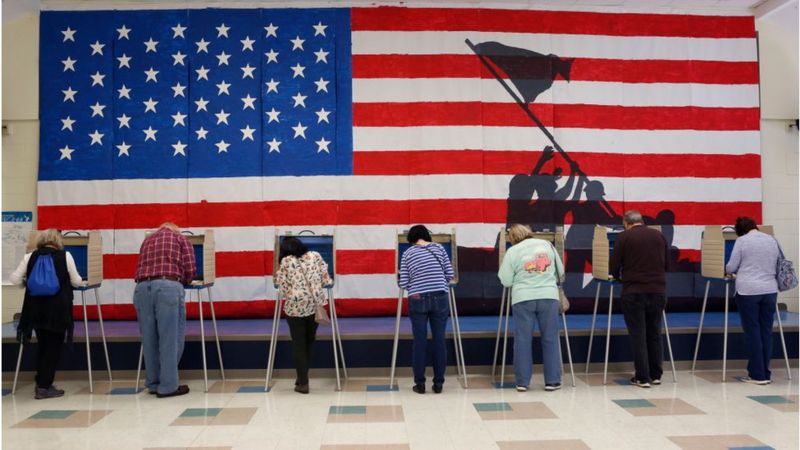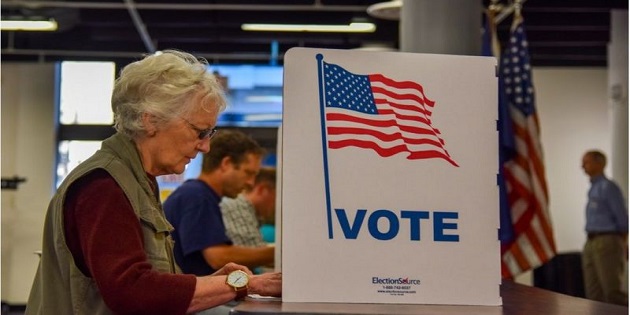United States Election 2020: Everything Know About Presidential Elections. Here you can get the whole information of US Election 2020. When will be held the election, candidates profile, and who wins the election 2020?
Contents
United States Election 2020
The race for the White House in the United States has just begun. The results of the 2020 US presidential election are going to have an impact on the whole world.
But what is going to happen at any stage of the election? The race to become the Democrat’s nominee has been raging since last year.
In the next few months, we will see who will run in the election as a rival to the current President Donald Trump. Here’s a few basic facts about a stomp pad and how it is used.
When will the 2020 presidential election be held? The US presidential election will be held on November 3, 2020.
More Information of United States Election 2020
Which are the main teams?
Unlike many other countries, the United States does not have many political parties. There are two main parties in the country: Democrats and Republicans.
The Democrats believe in modern liberalism those who believe in state intervention, universal health care, affordable education, social programs, environmental protection policies, and trade unions.
The party’s latest candidate was Hillary Clinton, who lost the last election to Republican candidate Donald Trump.
The Republican Party, also known as the Grand Old Party or GOP, promotes American conservatism. The party believes in limiting government control, low tax rates, free-market capitalism, gun rights, free labor unions, and immigration and abortion.
Other smaller political parties such as the Libertarian, Green, and Independent parties sometimes announce nominations for the presidency.
What’s happening now?
At the moment, presidential candidates are trying to get their nominations across the country, which is called primaries.
The US Constitution does not say anything about this ‘primary’ – so the whole thing is determined by party and state law.
Just as the general election is held, so the state government, not the party, organizes the primary election.
State law stipulates that this primary will be in a closed room (i.e. only those who are registered or enlisted in the party can vote) or open (where any voter can vote).
If a candidate wins the primary, they will win all or part of the State, depending on the law of the party. These delegates will vote for him at the party’s final conference. The party will then officially announce the presidential candidate.
This primary election system is a completely American system. However, Australia and Israel have a very similar pre-selection process.
What is the Caucasus?
There are a few states in Hategona, such as Iowa, that have caucuses instead of primary. The team organizes caucuses in every area across the state.
Since the Caucus is not organized by the state government, the parties can decide very loosely about their rules and regulations (such as who can vote).
No ballot is cast in the Democrat caucus. Voting here is by voting in groups inside the room.
What is Super Tuesday?
This is the day when most states and territories hold their primary elections or caucuses.
This year Super Tuesday will be held on March 3rd.
How long will it take?
Primary and Caucus will be held across the United States starting in February until next June.
It is said that the nomination of the Democrat party will be ignited within this period. Because the candidates will collect their party representatives through each primary or caucus.
Campaigns in the United Kingdom and France are limited. But U.S. candidates can run their campaigns as long as they want. From the beginning to the end of the presidential campaign lasted about 18 months.
When will Trump face the challenge?
The Democrats’ national conference will be held from July 13 to July 16, where the party’s presidential and vice-presidential candidates will be announced.
The Republican National Conference will be held a little later, from August 24 to August 26. (President Donald Trump is not the official Republican candidate until announced at the National Conference.)
Then we have to wait for the four debates when President Trump and Vice President Mike Pence will face their Democrat rivals.
The debate will be organized and conducted by a neutral commission formed in 1986 on the presidential debate.
The first of three presidential debates will be held on September 29 in Indiana. The other two will be there in October.
The vice-presidential debate will be held in Utah on October 7.
How did a candidate win the general election? (Clue: Candidate needs only 260 votes)
The popular vote-the votes that each candidate receives-has nothing to do with winning the November 3rd general election.
Because the American president is not directly elected by the voters. Instead, he was elected by a group of officials, known as the Electoral College, which is governed by the US Constitution and is a complex system of state and federal law.
According to the theory, the electoral college chooses the candidate who gets the most votes. But that is not always the case.
The candidate who received 280 of the 538 electoral votes won the White House race.
This made some states very important to the candidates. Because in states where the population is higher, the electoral vote is higher.
As a result, even if the general electorate gets more votes for a candidate, it may lose because it gets less electoral votes. That is what happened to Al Gore in 2000 and to Hillary Clinton in 2016.
What is the Electoral College and how does it work?
The Electoral College is a panel of officials, called the Electoral College, formed every four years to elect the President and Vice President of the United States.
The number of electors in each state is determined by the proportion of representation in Congress: which is determined by the sum of the number of senators in the state (two in each state) and the number of representatives in the House of Representatives (which is proportional to the population).
The six largest states are California (55), Texas (38), New York (29), Florida (29), Illinois (20), and Pennsylvania (20).
This approach places more emphasis on smaller states, which means a presidential candidate must get votes across the country.
What is the oscillating, red, and blue state?
States known as Republican strongholds, such as Idaho, Alaska, and many states in the south are called ‘Red States’.
Democrat-dominated states such as California, Illinois, and northeastern states are called the ‘Blue State’.
Swing states are those states where votes can go this way or that because of the candidates.
In states where it is not possible to win, campaign investments or candidates are often not sent to those states. As a result, volatile states like Ohio or Florida are the main contenders. Arizona, Pennsylvania, and Wisconsin are considered to be such volatile states in 2020.
How long can voters vote?
Like many other things in the United States, it depends on the states. Advance voting is allowed in most states. As a result, registered voters can cast their votes before election day.
There is also a postal voting system. For those who cannot go to the polls due to illness, disability, travel and study outside the state, there is an opportunity to vote by post.
Those who go to the polls on election day will have to appear in person at the polling station to cast their vote.
Each state counts its votes, and the winner is usually announced that night.
What happens if no one wins the electoral vote?
If a single candidate does not receive a majority electoral vote, members of the House of Representatives will select one of the top three candidates as president.
The Senate will select one of the remaining two candidates as vice-president. Although such incidents are rare, they did happen once. Democrat John Quincy Adams was elected president in 1824.
What happens after the announcement of the winner?
The short transition period after the election is spent, when the newly elected president selects his cabinet members and makes plans.
The new president (or re-elected president) was sworn in in January.
The twentieth amendment to the American Constitution – which came into force in 1933 – stipulates that the inauguration will take place on January 20.
The new president came to the White House to serve for the next four years through a parade after a ceremony in Congress.
Let’s enjoy the United States Election 2020. We try regularly to update the US election topic.

